Book Launch: Industrial Human Resource Development in Developing Countries in the New Era
2021.05.26
On April 20, 2021, the JICA Ogata Sadako Research Institute for Peace and Development (JICA Ogata Research Institute) held a webinar together with the Nagoya University Skill and Knowledge for Youth Project (SKY Project) to commemorate the publishing of the Japanese book "Tojyokoku no sangyo jinzai ikusei – SDGs jidai no chishiki to gino" (Tentative translation: Industrial Human Resource Development in Developing Countries – Knowledge and Skills in the Age of the SDGs). This book was published in February 2021 through the cooperation of researchers and practitioners in multiple disciplines, including those involved in the "Research Project on the Japanese Experience of Industrial Development and Development Cooperation: Analysis of Translative Adaptation Processes," conducted by JICA Ogata Research Institute. The book addresses issues of industrial human resource development in developing countries. The webinar served as a forum for discussions as the authors reflected on their respective research and exchanged views among themselves and the webinar participants through Q&A sessions.
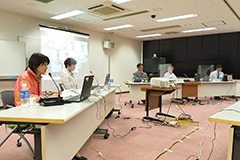
Ohno Izumi, senior research advisor at the JICA Ogata Research Institute (far left), delivered an opening address
JICA Ogata Research Institute Senior Research Advisor Ohno Izumi (professor, National Graduate Institute for Policy Studies), who is an author and editor of the book, kicked off the event with an opening address. “Japan has supported industrial human resource development in developing countries for long time, with diverse objectives such as industrial development, education, employment, capacity building and poverty reduction, in partnership with various actors. With the Sustainable Development Goals (SDGs) receiving widespread recognition now, it is important to put Japanese development cooperation in this area into a comprehensive perspective. It is also timely and critically important to consider the challenges of industrial human resource development from today’s perspectives, by taking account of the new normal of COVID-19, globalization and digitalization.”
Following the opening remark, an overview of the new book was provided by Professor Yamada Shoko of Nagoya University, representative of the SKY Project and another author and editor of the book. She explained; “The main feature of this book is that it approaches issues of industrial human resource development from a multidimensional perspective, including both micro and macro perspective, and in terms of both research and practical on-site application.” She pointed out that the idea of the book stems from the observation of the situation in developing countries that value-added per worker (labor productivity) and wages per worker remain low. This is even despite a comparatively higher economic growth rate than developed countries and corresponding growth in the number of available jobs. According to her, both for poverty reduction and sustainable national growth, human resource development plays a pivotal role by increasing labor productivity and individual income. However, companies, job seekers, and training institutions all have different expectations and needs, creating skill gaps in reality. She argues, “In order to narrow these gaps, systems for human resource development must be designed to meet such diverse needs flexibly and timely. Human resource development relates to a number of different SDGs targets, directly and indirectly. If it is successful, it can contribute to tackling multiple development needs.”
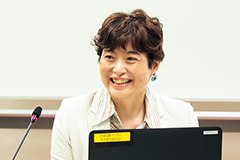
Professor Yamada Shoko of Nagoya Universityan gave an overview of the new book
In the panel discussion that followed, Tsujimoto Atsushi, JICA Ogata Research Institute research officer gave an overview of Chapter 5, “Japanese Cooperation for Industrial Human Resource Development in Developing Countries by the Government and the Private Sector” by looking at the evolution of JICA and the Association for Overseas Technical Cooperation and Sustainable Partnerships (AOTS) projects. He also introduced Chapter 8 “Technical and Vocational Education and Training (TVET) in Conflict-Affected Countries,” to discuss the characteristics of industrial human resource development in conflict affected countries and the expected role in peacebuilding, referring to a skills training project for ex-combatants in Rwanda. He explained that while Japan’s industrial human development cooperation has often been criticized for its limited engagement in TVET policies and systems, its practical approach to producing technical personnel at TVET institutes may have been appropriate because industrial human resource development must address the diverse needs of various actors at worksites.
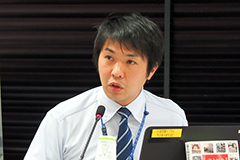
Tsujimoto Atsushi, research officer at the JICA Ogata Research Institute, introduced Chapters 5 and 8
The second panelist, Mori Junichi, International Labour Organization chief technical advisor, delivered key messages from Chapter 4 “Interdependence between Industrial Human Resource Development Policy and Industrial Policy: The Need to Create Skill Demands” and Chapter 9 “Industrial Human Resource Development and Economic, Social, and Regional Factors: Comparison of Vietnam and Ethiopia”. He highlighted that the main argument of Chapter 4 informs the importance of considering skill mismatches as an issue for both supply side and demand side, and that there is need for proactive government policy to stimulate skill demands. Regarding Chapter 9, he explained the differences and commonalities on the role of TVET in Vietnam and Ethiopia. He elaborated by saying; “The role that TVET should play shall differ according to the stage of industrialization, and also the societal factors in the particular country. It is important for industries, academia, and government to cooperate in creating an environment that can enable TVET graduates to develop a career path suited to the skills they have acquired through TVET.”
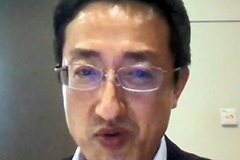
Mori Junichi, chief technical advisor at the International Labour Organization, delivered key messages from Chapter 4
The third panelist, Professor Takahashi Motoki of Kyoto University gave an overview of Chapter 11 “Human Resource Development of Informal Manufacturing Sites in Developing Countries: Case Studies from Kenya and Ethiopia”. Based on researches that he conducted at manufacturing sites in Kenya and Ethiopia together with co-author Matsubara Kana, he shared their observations by saying; “The reality is that vocational training has yet to reach the general workers or those in the informal sector in either country. However, it is observed in the manufacturing process of products such as sofas and leather footwear that workers are acquiring certain level of skills from their mentors or other workers, and learning from each other. They have their own unique method for skills acquisition. Human resource development that intends to change the industrial structure in Africa must be finely adapted to each company size and social context.” He emphasized the importance of understanding the ways in which skills are developed and formed in each actual context.
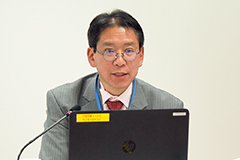
Professor Takahashi Motoki of Kyoto University gave an overview of Chapter 11
Finally, the fourth panelist Jin Kimiaki, JICA Ogata Research Institute senior assistant director presented the summary of Chapter 7 “Changes in the Values Arising from Kaizen Activities: Implications of Japan’s Productivity Improvement Model on Traditional Ethiopian Society”. He introduced the best practices of Kaizen implementation in Ethiopia and pointed out that; “Ethiopian government showed strong commitment to spreading Kaizen, and they devised their own ways to disseminate knowledge (which he explained the process as “translative adaptation”). They utilized their own budget for the promotion of Kaizen.” He further added; “What Kaizen achieved was a change in the Ethiopians’ mindset towards their sense of attachment to their respective organizations. As we enter the world of new normal with the COVID-19 pandemic, Kaizen mindset is of critical importance to generate change through adaptation and flexibility.”
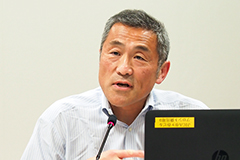
Jin Kimiaki, senior assistant director of the JICA Ogata Research Institute, presented the summary of Chapter 7
In the Q&A session that followed, discussions took place on various topics including Kaizen activities in TVET, definition of the business community and their needs, and the necessity for multi-stakeholder partnership for human resource development.
Finally, Yamada Minoru, executive senior research fellow and assistant director of the JICA Ogata Research Institute, concluded the webinar with a closing address noting; “This book views human resource development from various perspectives. It informed me about some perspectives that I was lacking. I hope that our research project will also generate achievements based on such wide perspectives."

事業事前評価表(地球規模課題対応国際科学技術協力(SATREPS)).国際協力機構 地球環境部 . 防災第一チーム. 1.案件名.国 名: フィリピン共和国.

事業事前評価表(地球規模課題対応国際科学技術協力(SATREPS)).国際協力機構 地球環境部 . 防災第一チーム. 1.案件名.国 名: フィリピン共和国.

事業事前評価表(地球規模課題対応国際科学技術協力(SATREPS)).国際協力機構 地球環境部 . 防災第一チーム. 1.案件名.国 名: フィリピン共和国.

事業事前評価表(地球規模課題対応国際科学技術協力(SATREPS)).国際協力機構 地球環境部 . 防災第一チーム. 1.案件名.国 名: フィリピン共和国.

事業事前評価表(地球規模課題対応国際科学技術協力(SATREPS)).国際協力機構 地球環境部 . 防災第一チーム. 1.案件名.国 名: フィリピン共和国.
scroll